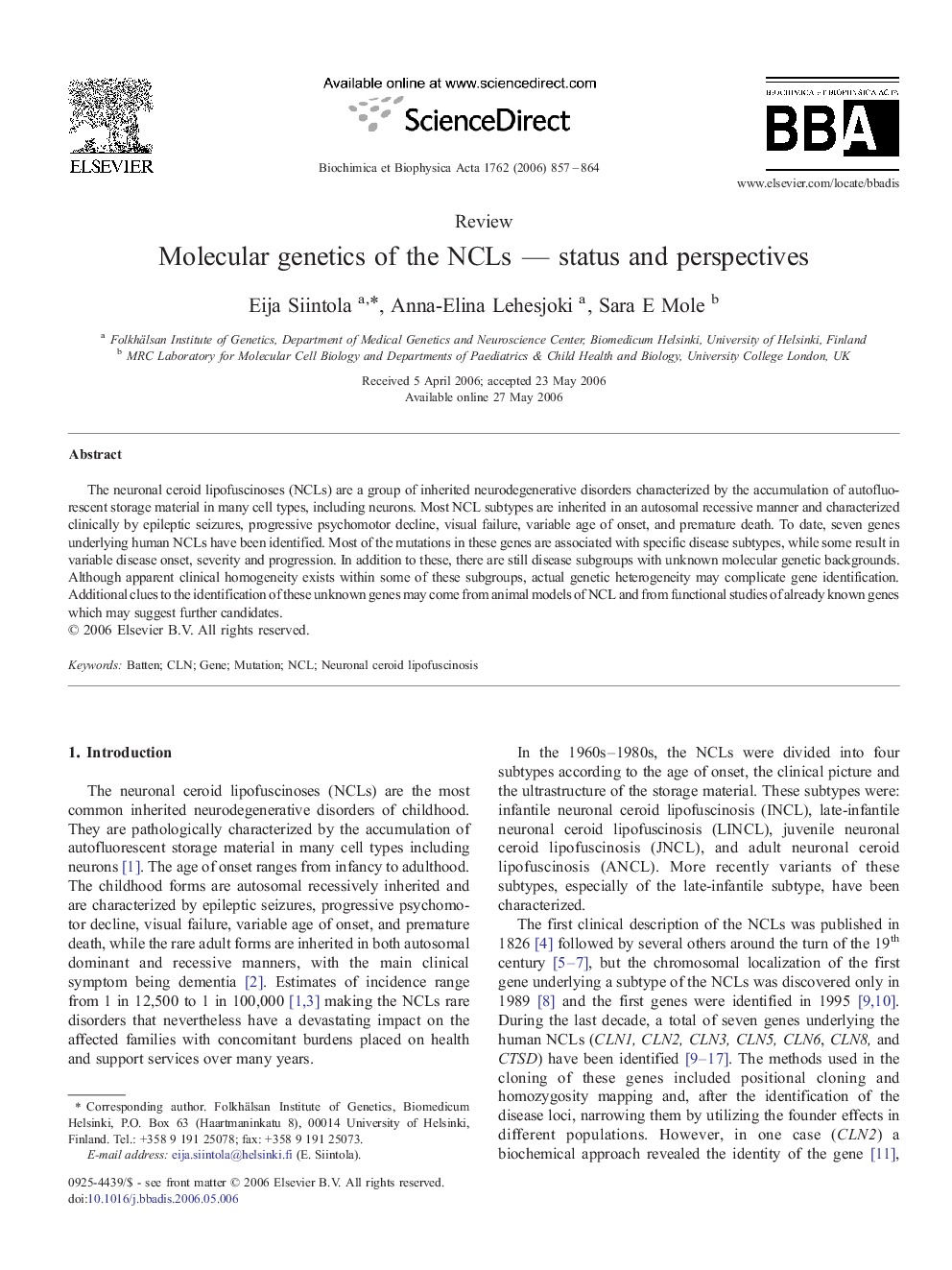| Article ID | Journal | Published Year | Pages | File Type |
|---|---|---|---|---|
| 1905944 | Biochimica et Biophysica Acta (BBA) - Molecular Basis of Disease | 2006 | 8 Pages |
The neuronal ceroid lipofuscinoses (NCLs) are a group of inherited neurodegenerative disorders characterized by the accumulation of autofluorescent storage material in many cell types, including neurons. Most NCL subtypes are inherited in an autosomal recessive manner and characterized clinically by epileptic seizures, progressive psychomotor decline, visual failure, variable age of onset, and premature death. To date, seven genes underlying human NCLs have been identified. Most of the mutations in these genes are associated with specific disease subtypes, while some result in variable disease onset, severity and progression. In addition to these, there are still disease subgroups with unknown molecular genetic backgrounds. Although apparent clinical homogeneity exists within some of these subgroups, actual genetic heterogeneity may complicate gene identification. Additional clues to the identification of these unknown genes may come from animal models of NCL and from functional studies of already known genes which may suggest further candidates.
